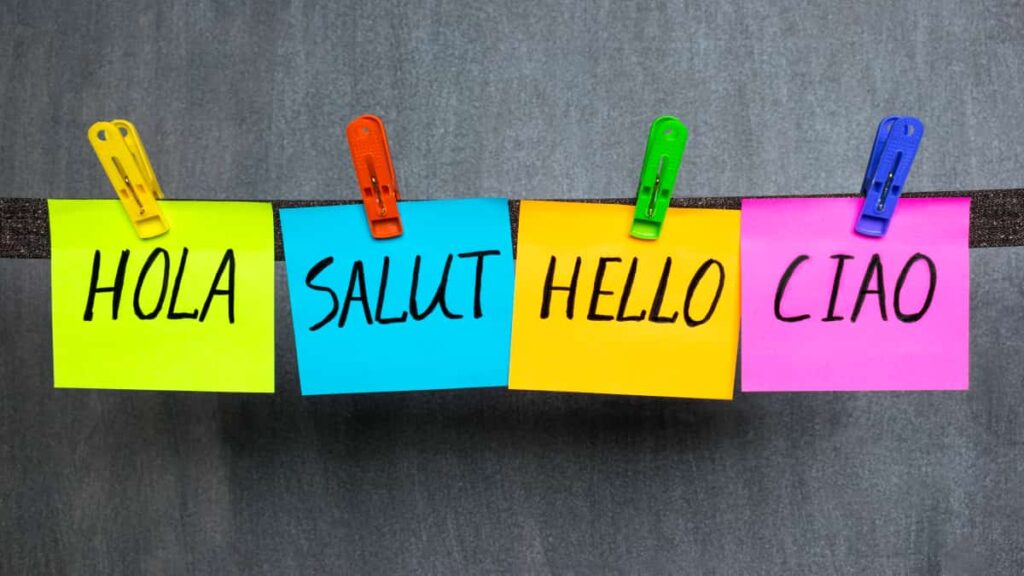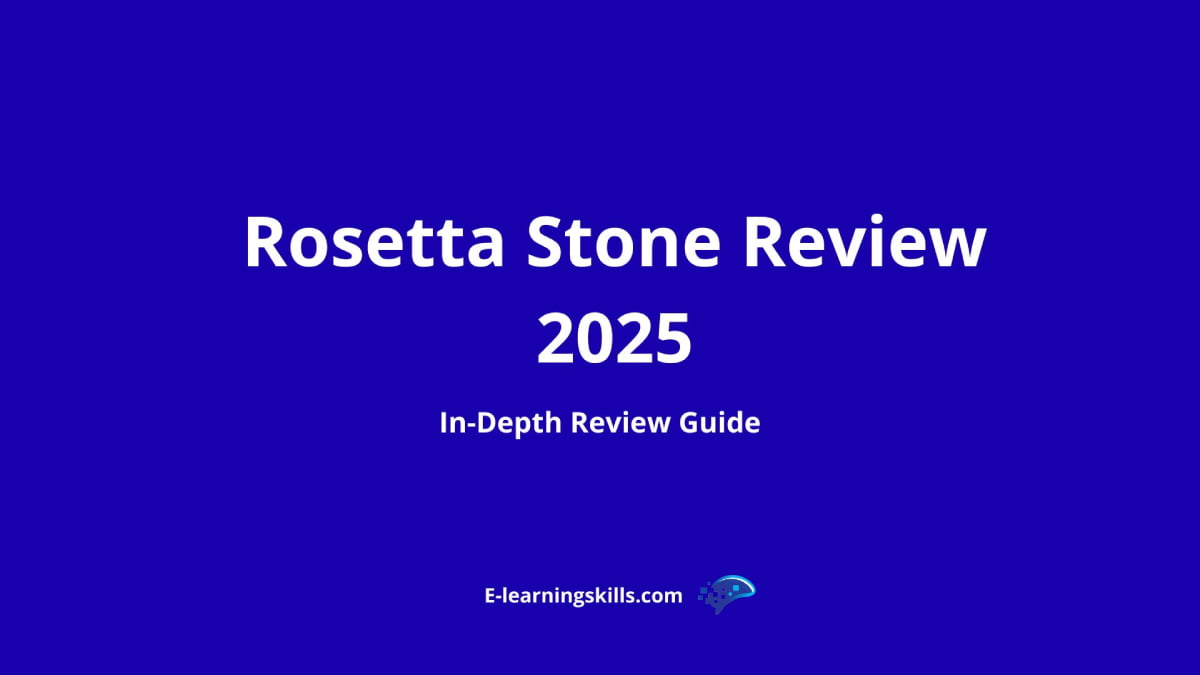Language learning continues to grow in popularity as more people turn to language learning apps and programs to achieve their goals. Among the many options available, Rosetta Stone remains one of the most recognized names in the industry. But does Rosetta Stone really work in 2025? In this Rosetta Stone Review 2025, we’ll take a close look at the program’s pros and cons, subscription plans, and features. We’ll also compare it to other popular options like Duolingo, Babbel, and Pimsleur. If you’re interested in learning a foreign language and want to know if Rosetta Stone is worth the money, this article will give you the answers you need.
Outline:
- What is Rosetta Stone and How Does it Work?
- Why Rosetta Stone is Good for Learning a New Language
- Pros and Cons of Using Rosetta Stone
- Detailed Review of the Rosetta Stone Program
- How to Use Rosetta Stone to Learn Spanish and Other Languages
- Subscription Plans, Lifetime Package, and Mobile App Features
- Comparing Rosetta Stone with Duolingo, Babbel, Pimsleur, and Other Apps
- Common Weaknesses of the Rosetta Stone Program
- Does the Entire Rosetta Stone Program Make You Fluent?
- Tips for Maximizing Your Rosetta Stone Learning Experience
- Rosetta Stone for Visual Learners and Different Learning Styles
- Rosetta Stone vs Live Classes and Immersive Learning
- Final Verdict: Is Rosetta Stone Worth the Money in 2025?
What is Rosetta Stone and How Does it Work?
Rosetta Stone is one of the oldest and most recognizable language learning apps available. Originally launched as CD-ROM software, it has evolved into a robust mobile app and online language program. Rosetta Stone offers more than 20 languages and is built around an immersive learning method that uses minimal English explanations.
The Rosetta Stone program is structured into learning units, each containing four lessons. Learners progress through vocabulary, grammar, and pronunciation exercises without direct translation. Instead, they infer meaning through visuals, audio, and context. This immersive learning approach mimics how children learn their first language and can be especially effective for visual learners.
Rosetta Stone provides core lesson work, audio lessons, and additional practice in reading and speaking. The mobile app features speech recognition technology, helping learners perfect their pronunciation. For those who want to learn a foreign language with structure, Rosetta Stone’s lessons can feel intuitive and logical.

Why Rosetta Stone is Good for Learning a New Language
One of the reasons Rosetta Stone is good for learning is its emphasis on natural acquisition. By reducing the use of English, learners are encouraged to think directly in the target language. This method can lead to faster comprehension and improved conversational skills over time.
Rosetta Stone’s languages are taught using a consistent methodology. Whether you’re learning Spanish, French, Mandarin, or Arabic, the course structure remains the same. Each core lesson builds on the previous one, gradually introducing verbs, grammar patterns, and words and phrases in context.
The app is particularly effective for visual learners who respond well to images and audio prompts. By repeatedly associating visuals with words and phrases, learners strengthen their memory and understanding. This makes the program good for learning basic vocabulary and sentence structure in a new language.
Pros and Cons of Using Rosetta Stone
Like any language learning tool, there are pros and cons of using Rosetta Stone. Here is a balanced overview:
Pros:
- Immersive learning style encourages thinking in the target language
- Structured lessons with clear progression
- Rosetta Stone offers a well-designed mobile app and desktop platform
- Lifetime package gives access to all languages for one price
- Speech recognition helps learners improve pronunciation
Cons:
- Limited explicit grammar explanations for learners who need detailed instruction
- Less flexibility for different learning styles; not ideal for everyone
- Live classes are limited compared to other language apps
- Subscription plans can be expensive unless purchased on sale
- Repetition can feel monotonous for some learners
Understanding these pros and cons of using the program can help you decide if it matches your learning style and goals.
Detailed Review of the Rosetta Stone Program
This detailed review examines the entire Rosetta Stone program, from lesson structure to learning outcomes. Each course from Rosetta Stone is divided into learning units, and each unit contains four lessons. Lessons start with core lesson work and expand to reading, listening, speaking, and writing activities.
Another aspect of the Rosetta Stone approach is its reliance on immersive learning. Learners aren’t given translations or grammar charts; instead, they discover meanings through context. For visual learners, this can be really effective. However, others might feel frustrated without explicit instruction on verb conjugations and grammar rules.
Rosetta Stone provides additional resources beyond its standard lessons. These include audio lessons, phrasebooks, and live classes (for higher-tier subscription plans). Learners can also take advantage of the mobile app’s speech recognition and offline access to lessons, making it easy to practice anywhere.
How to Use Rosetta Stone to Learn Spanish and Other Languages
Rosetta Stone’s Spanish course is one of its most popular offerings. The same methodology applies to other languages, from German to Japanese. Learners begin with basic vocabulary and phrases, gradually progressing to more complex grammar and conversational skills.
Using Rosetta Stone to learn Spanish involves consistent practice. The program recommends completing at least one core lesson work per day, supported by review activities. Learners should also make use of audio lessons to reinforce listening skills and pronunciation.
The immersive nature of Rosetta Stone’s Spanish course can be challenging at first, but sticking with it can yield strong results. Learners often report improved comprehension and confidence in speaking after completing the entire Rosetta Stone program.
Subscription Plans, Lifetime Package, and Mobile App Features
Rosetta Stone offers three plans: monthly, annual, and lifetime package. Subscription plans grant access to all available languages, making it possible to learn multiple languages at once.
The lifetime package is especially appealing to serious learners. For a one-time payment, you unlock every course from Rosetta Stone forever, including future updates. This is ideal for learners who want to learn multiple foreign languages over time.
The mobile app is a major strength. It syncs progress across devices, offers offline mode, and uses speech recognition to refine pronunciation. Visual learners benefit from the clean design, while audio lessons cater to those who prefer listening.

Comparing Rosetta Stone with Duolingo, Babbel, Pimsleur, and Other Apps
How does Rosetta Stone stack up against apps like Duolingo, Babbel, and Pimsleur? Each of these language learning apps has unique strengths.
- Duolingo: Known for gamified, bite-sized lessons. Great for casual learners but less structured than Rosetta Stone.
- Babbel: Offers more grammar explanations and conversational focus. Shorter lessons are easier to fit into a busy schedule.
- Pimsleur: Focuses heavily on audio lessons and conversational skills. Programs like Pimsleur and Rocket Languages are excellent for auditory learners.
Rosetta Stone is in the middle, offering structured, immersive lessons that appeal to visual learners. It’s worth noting that Rosetta Stone could be most effective when combined with other tools. For example, learners can use apps like Duolingo for daily practice and Pimsleur for listening and speaking drills.
Common Weaknesses of the Rosetta Stone Program
The weaknesses of the Rosetta Stone program mainly stem from its immersive approach. While it benefits some learners, others may find it rigid.
Rosetta Stone doesn’t provide detailed grammar explanations, which can leave some learners confused about verb conjugations and sentence structure. Another aspect of the Rosetta Stone method is its repetition; while effective for memorization, it can become monotonous.
Live classes are limited, and the mobile app doesn’t offer the same level of conversational practice as some competitors. Visual learners thrive with Rosetta Stone, but those who prefer interactive or immersive learning with real people might be disappointed.
Does the Entire Rosetta Stone Program Make You Fluent?
Can the entire Rosetta Stone program make you fluent? The answer depends on your definition of fluency and your dedication. Rosetta Stone does offer a solid foundation in vocabulary, grammar, and pronunciation, but fluency requires real-world practice.
It’s worth noting that Rosetta Stone could be a strong foundation when combined with other resources. Learners should use additional tools, such as live classes, apps like Duolingo, or programs like Pimsleur and Rocket Languages, to practice conversational skills.
While Rosetta Stone’s lessons will help you become conversational, reaching fluent status requires more than any single app can provide. Regular interaction with native speakers and exposure to authentic materials are essential.
Tips for Maximizing Your Rosetta Stone Learning Experience
If you want to learn a language effectively with Rosetta Stone, follow these tips:
- Be consistent: Complete at least one core lesson work daily to maintain momentum.
- Use all available resources: Take advantage of audio lessons, phrasebooks, and live classes.
- Practice speaking aloud: Use speech recognition and practice with native speakers whenever possible.
- Review regularly: Revisit previous lessons and learning units to reinforce knowledge.
- Combine with other tools: Apps like Duolingo and programs like Pimsleur can complement Rosetta Stone’s methodology.
Rosetta Stone for Visual Learners and Different Learning Styles
Rosetta Stone’s immersive learning approach is particularly effective for visual learners. The use of images, audio, and minimal text allows learners to form strong associations between words and concepts.
However, not all learning styles thrive with Rosetta Stone. Learners who prefer explicit grammar instruction might feel frustrated. It’s important to evaluate your own learning style before committing to the program.
Rosetta Stone vs Live Classes and Immersive Learning
Rosetta Stone’s lessons simulate immersion, but they can’t fully replicate the experience of living abroad or attending live classes. Live classes provide immediate feedback, cultural context, and conversational practice.
Learners who want to learn a new language quickly might combine Rosetta Stone with live classes or immersive experiences. This combination can be really effective for building fluency.

Final Verdict: Is Rosetta Stone Worth the Money in 2025?
The final verdict: Rosetta Stone is worth the money for learners who enjoy structured, immersive learning. The program’s strengths include its clear progression, wide selection of languages, and excellent mobile app.
However, there are cons of using Rosetta Stone, including limited grammar explanations and few live classes. Think Rosetta Stone as a foundational tool rather than a complete solution for fluency. Learners who combine Rosetta Stone with other language learning apps and real-world practice will see the best results. P.S. If you’d like to dive deeper, we also have a full Duolingo review, feel free to check it out.
Key Takeaways from This Rosetta Stone Review 2025
- Rosetta Stone is one of the most established language learning apps, offering structured, immersive lessons.
- Subscription plans include monthly, annual, and lifetime options.
- Visual learners benefit most from Rosetta Stone’s approach.
- The mobile app is robust, with speech recognition and offline access.
- Weaknesses include limited grammar explanations and less conversational practice.
- Combining Rosetta Stone with apps like Duolingo, Babbel, and programs like Pimsleur can enhance results.
- Fluency requires practice beyond any single app; live classes and real-world interaction are essential.
- For dedicated learners, the lifetime package offers excellent value.
By understanding the strengths and weaknesses of the Rosetta Stone program, you can decide if it’s the right language program for you in 2025.
Frequently Asked Questions
1) Is Rosetta Stone still worth it in 2025?
Yes, if you like structured, immersive lessons and visual learning. But for full fluency you still need conversation practice + native content.
2) Who benefits most from Rosetta Stone’s method?
Visual learners who prefer image + audio association over grammar charts. If you need explicit grammar explanations, Babbel or a tutor is usually better.
3) Can Rosetta Stone make you fluent by itself?
No single app can. Rosetta Stone builds a strong foundation; fluency requires speaking with real people + native input.
4) Is the Rosetta Stone lifetime package good value?
Yes, if you want access to multiple languages long-term. For single-language casual study, monthly/annual might be enough.
5) How does Rosetta Stone compare to Duolingo?
Duolingo = gamified + habit building.
Rosetta Stone = structured + immersive + visual association.
Duolingo is easier to start; Rosetta Stone is better for deeper foundation.
6) How does Rosetta Stone compare to Babbel and Pimsleur?
Babbel = more grammar clarity.
Pimsleur = stronger conversational/audio training.
Rosetta Stone sits in the middle, best for structured visual learning.
7) Does Rosetta Stone teach grammar clearly?
Not explicitly. Grammar is implied via context. This is intentional, but can feel vague if you rely on rule-based learning.
8) How do you get the fastest results with Rosetta Stone?
Daily core lesson + weekly audio review + 1 real conversation per week (language exchange/tutor). Combo = foundation + speaking activation.







